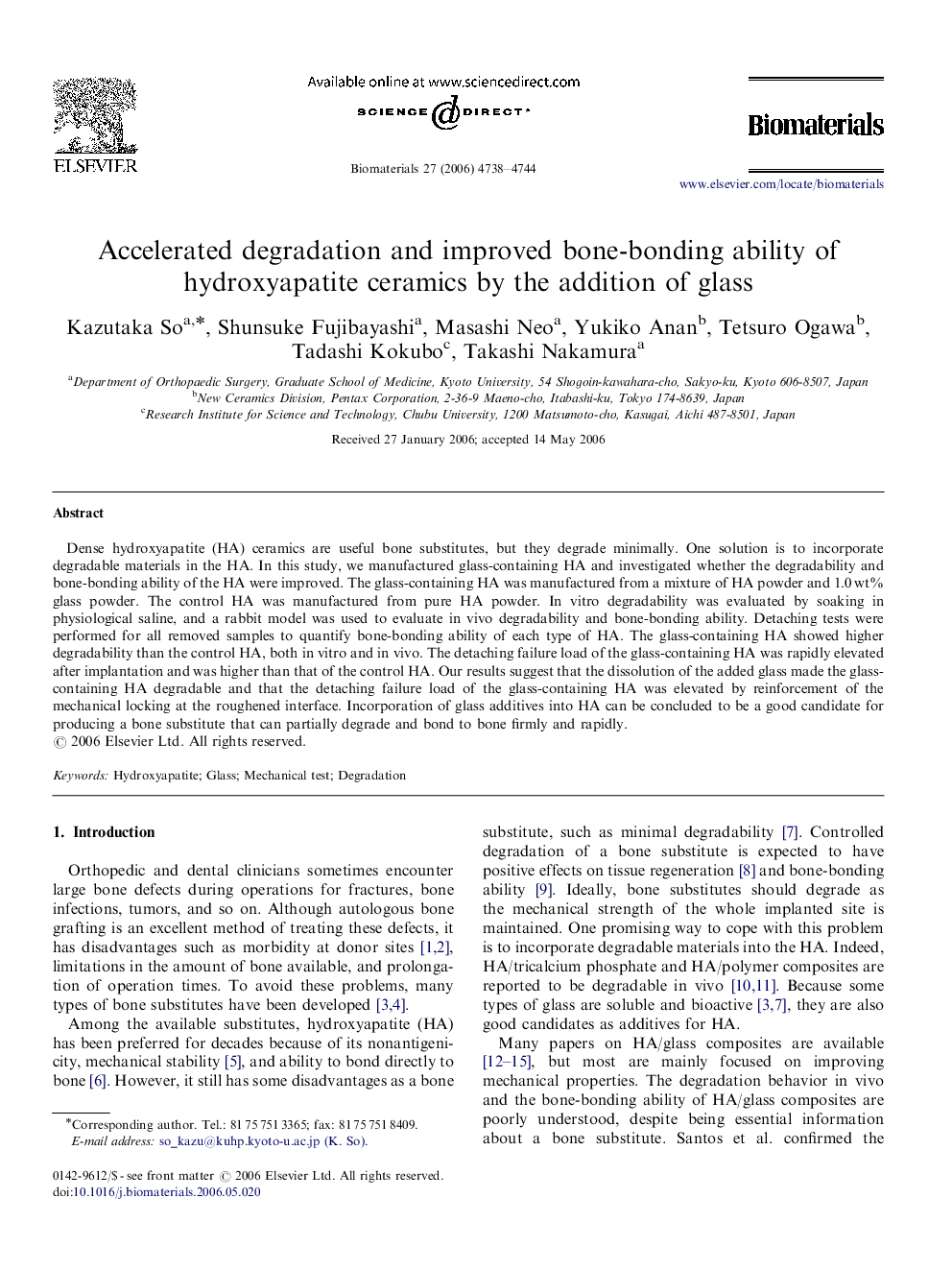| Article ID | Journal | Published Year | Pages | File Type |
|---|---|---|---|---|
| 11315 | Biomaterials | 2006 | 7 Pages |
Dense hydroxyapatite (HA) ceramics are useful bone substitutes, but they degrade minimally. One solution is to incorporate degradable materials in the HA. In this study, we manufactured glass-containing HA and investigated whether the degradability and bone-bonding ability of the HA were improved. The glass-containing HA was manufactured from a mixture of HA powder and 1.0 wt% glass powder. The control HA was manufactured from pure HA powder. In vitro degradability was evaluated by soaking in physiological saline, and a rabbit model was used to evaluate in vivo degradability and bone-bonding ability. Detaching tests were performed for all removed samples to quantify bone-bonding ability of each type of HA. The glass-containing HA showed higher degradability than the control HA, both in vitro and in vivo. The detaching failure load of the glass-containing HA was rapidly elevated after implantation and was higher than that of the control HA. Our results suggest that the dissolution of the added glass made the glass-containing HA degradable and that the detaching failure load of the glass-containing HA was elevated by reinforcement of the mechanical locking at the roughened interface. Incorporation of glass additives into HA can be concluded to be a good candidate for producing a bone substitute that can partially degrade and bond to bone firmly and rapidly.
